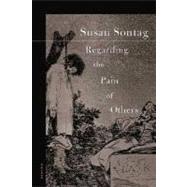Regarding the Pain of Others

Regarding the Pain of Others
- ISBN 13:
9780312422196
- ISBN 10:
0312422199
- Edition: Reprint
- Format: Paperback
- Copyright: 02/01/2004
- Publisher: Picador
.svg) Rent
From $10.00
Rent
From $10.00
Used From $14.85
List Price $18.00 Save
| TERM | PRICE | DUE |
|---|---|---|
Added Benefits of Renting



List Price $18.00 Save $3.15
Used
$14.85
In Stock Usually Ships in 24 Hours.
We Buy This Book Back!
Included with your book
Free Shipping On Every Order



